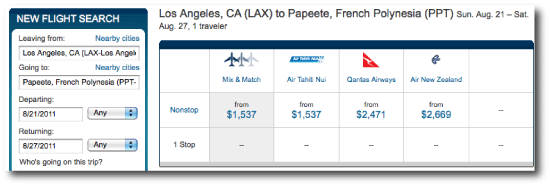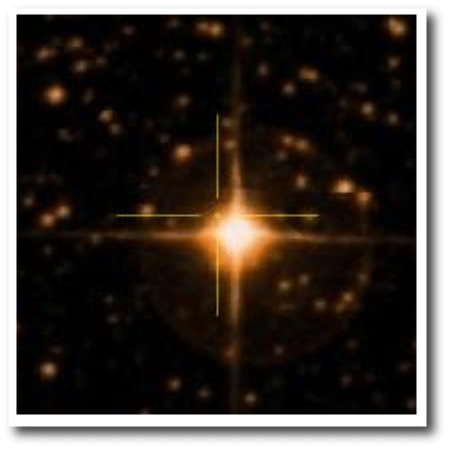The transit discovery opportunity for HD 156846b is fast approaching, and observations, especially for observers at southern latitudes, are very much in demand for the nights of August 23rd, 24th, and 25th. If you are considering observing, please see Lubos Brat’s campaign page at the Exoplanet Transit Database for more details.
And if you have a portable telescope/CCD combination, and a carbon footprint to match, why not consider a last-minute trip to Tahiti for on-the-spot observations? A quick check on Expedia shows that round-trip direct flights departing from Los Angeles this weekend can be had for a mere USD 1537:

HD 156846b clearly owes its current high-eccentricity orbit to ongoing Kozai oscillations driven by BD-19 4605B, a V=14.1 early M-dwarf binary companion to HD 156846 that lies at a projected separation of ~250 AU:

In all likelihood, HD 156846b is currently near the peak eccentricity of its Kozai cycle. During most of the planet’s history, it orbits with a significantly different inclination, and with a significantly less elongated orbit. Konstantin Batygin made some reasonable assumptions regarding the orbital properties of the companion star, and did an integration using the double-averaging method to show that the planet has likely not had sufficient time to lock its spin period to the pseudo-synchronous value. It’s thus quite likely that HD 156846b rotates with a close-to-primordial day of less than 10 hours (like Jupiter) rather than at the much longer pseudo-synchronous spin period that almost certainly characterizes all of the other currently known transiting planets on significantly eccentric orbits.
I’ve written on a number of occasions about the apparent preference for regular satellite and planetary systems in which the total mass contained in satellites is roughly one or two parts in ten thousand as much as that contained in the primary body. This works for the large population of super-Earth/sub-Neptune planets orbiting nearby stars, as well as for the giant planets in our own solar system. Applying this rule of thumb to HD 156846b suggests that it could be accompanied by a satellite with a fair fraction of Earth’s mass. Such a satellite, if located ~0.01 AU from the primary, would cause barycenter-related transit timing shifts of order 6 seconds, and would likely be dynamically stable against both three-body orbital disruption and tidal orbital decay. Veering into an even more speculative mode, such a satellite, like Titan or Ganymede, would likely have a volatile-rich composition. During the current warm, high-eccentricity phase, it might be spewing out a huge cloud of molecules that just might be visible using high-resolution transit spectroscopy…
But first things first! It’s got to be determined that the planet actually transits before one can responsibly engage in such flights of fancy.


What about the possibility of two bodies in trojan or tadpole orbits? It might also be useful to target a wider window on these planets that have a higher probability of transiting. After all, the successful detection of a pair of transiting planets with interesting orbits would probably make headlines.
I’m not sure about the stability of these orbits when there’s high eccentricity, though. It might be better to target some of the planets in small circular orbits.
Any chance you can convince the guys at TRAPPIST to monitor the event ?